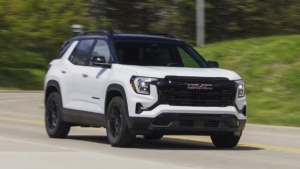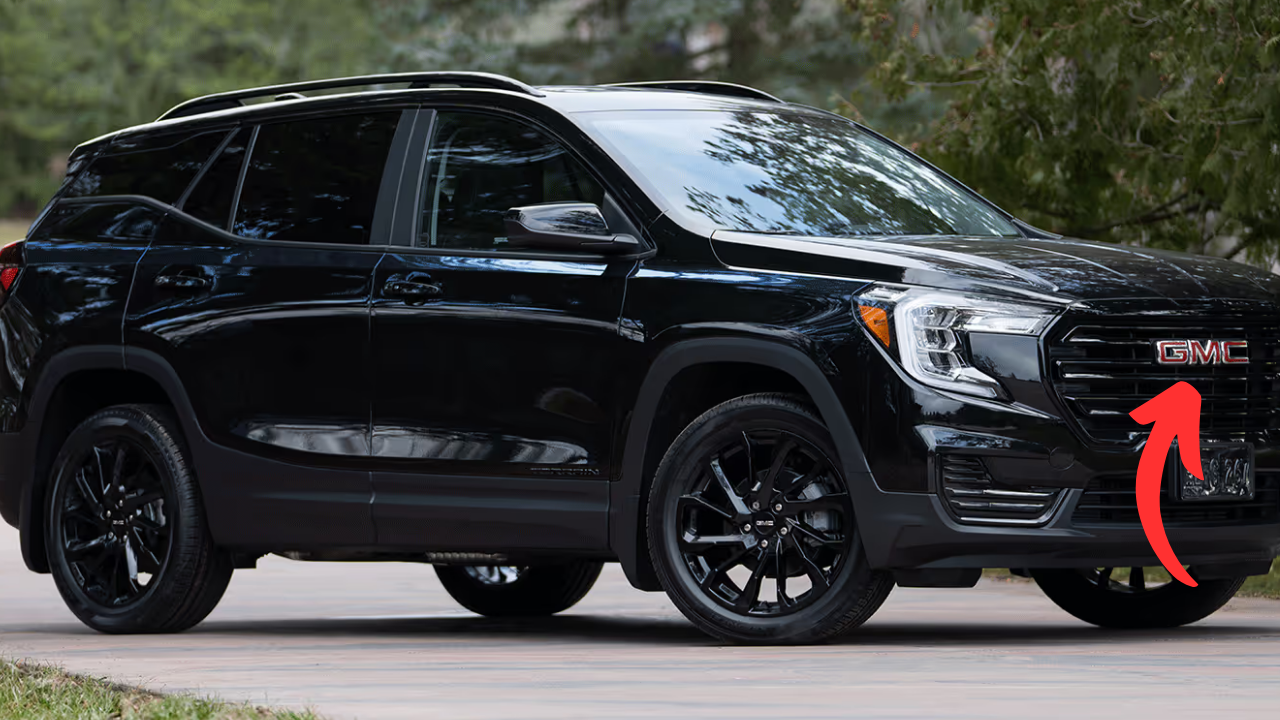The 2026 GMC Terrain has rolled onto the compact SUV scene with a bold new look, updated technology, and a promise of versatility across its Elevation, AT4, and Denali trims. With its rugged styling and upscale aspirations, it’s positioned to compete with heavyweights like the Honda CR-V, Toyota RAV4, and Nissan Rogue. But as the dust settles on its third-generation redesign, a question lingers: is the 2026 Terrain all show and no go? This article dives deep into its performance, specifications, design, and features to determine whether this SUV delivers substance to match its style.
A Bold New Look: Design and Styling
The 2026 GMC Terrain makes a strong first impression with its revamped exterior. Drawing inspiration from GMC’s larger SUVs like the Yukon and Acadia, the Terrain sports a boxier, more truck-like silhouette. The front fascia is dominated by a broad grille flanked by slim, C-shaped LED headlights and pronounced air intakes, giving it a muscular stance. The redesigned body features deeply sculpted sides and a more upright rear window, enhancing aerodynamics while maintaining a rugged aesthetic. The AT4 trim adds off-road flair with red recovery hooks, 17-inch wheels with all-terrain tires, and a skid plate, while the Denali elevates luxury with chrome accents, animated lighting, and optional 20-inch wheels.

Inside, the Terrain steps up its game with a premium-inspired cabin. A 15-inch vertically oriented infotainment screen, borrowed from the GMC Acadia, dominates the dashboard, paired with an 11-inch reconfigurable driver display. Soft, stitched materials adorn the dash and doors, and the Denali trim offers perforated leather and contrasting colors for a near-luxury feel. Standard features like heated front seats, a heated steering wheel, and Google Built-In software elevate the Elevation trim, while the Denali adds ventilated seats and a panoramic sunroof option. However, cargo capacity remains on the smaller side compared to rivals, and second-row legroom falls between the CR-V and RAV4, which may disappoint families needing maximum space.
The Terrain’s design screams confidence, but does its performance live up to the hype?
Under the Hood: Performance and Powertrain
At the heart of the 2026 GMC Terrain lies a 1.5-liter turbocharged four-cylinder engine, producing 175 horsepower across all trims. While this engine is shared with its sibling, the Chevrolet Equinox, its output varies slightly by drivetrain. Front-wheel-drive (FWD) models deliver 184 lb-ft of torque with a continuously variable transmission (CVT), while all-wheel-drive (AWD) versions bump torque to 203 lb-ft and pair with an eight-speed automatic transmission.
On paper, these specs are modest for the compact SUV class. Testing of the mechanically similar 2025 Chevrolet Equinox suggests the Terrain’s 0-60 mph time hovers around 8.6 to 9.0 seconds, which is sluggish compared to competitors like the Honda CR-V (around 7.5 seconds with its hybrid powertrain) or the Mazda CX-50. Reviewers have noted the engine feels underpowered, especially at highway speeds, where it can sound gruff and strained. The CVT in FWD models has been criticized for its “surge-happy” nature, while the eight-speed automatic in AWD models, though improved over the previous nine-speed, tends to upshift too eagerly, leading to delays in acceleration.
The Terrain’s towing capacity is capped at 1,500 pounds, adequate for small trailers but far below the class-leading Toyota RAV4’s 3,500-pound hybrid towing capacity. Fuel economy is another mixed bag, with estimates of 24–26 mpg city and 28–29 mpg highway, trailing behind hybrids like the CR-V (up to 43 mpg combined). The Terrain’s 25 mpg combined for AWD models is respectable but not exceptional.
For the AT4 trim, off-road capability is a selling point, but it’s not a hardcore trailblazer. Features like a Terrain drive mode, all-terrain tires, a skid plate, and a 0.4-inch higher ride height enhance light off-road performance, but the lack of locking differentials or advanced off-road tech like crawl control limits its prowess. The Denali, with its comfort-tuned suspension, prioritizes a smooth ride over dynamic handling, making it ideal for long highway cruises but less engaging on twisty roads.
In short, the Terrain’s powertrain is functional but lacks the punch to compete with the segment’s best. Its performance is adequate for daily commuting but falls short of delivering excitement or class-leading capability.
Handling and Ride Quality
The Terrain’s driving dynamics are a tale of competence rather than exhilaration. Its suspension—MacPherson struts up front and a multilink setup in the rear—delivers a generally comfortable ride, absorbing most bumps with ease. The AT4’s taller sidewalls and hydraulic bump stops provide extra cushioning on rough terrain, though its all-terrain tires generate noticeable road noise at highway speeds. The Denali’s adaptive dampers smooth out the ride further, but the 20-inch wheels can make it feel choppy on broken pavement.
Handling is stable but uninspiring. The Terrain leans in corners, and its electric power steering, while direct, lacks feedback, making it feel disconnected on winding roads. The AT4’s off-road tuning sacrifices some on-road sharpness, with reviewers noting tire squeal during spirited driving. The Elevation and Denali trims fare better for suburban driving, with composed handling and a quiet cabin thanks to active noise cancellation. However, compared to the Mazda CX-50’s sporty dynamics or the Subaru Forester’s confident AWD grip, the Terrain feels average.
Drive modes, including Normal, AWD, Snow, Off-Road, and Tow/Haul, offer some versatility, but the absence of a Sport mode means the Terrain doesn’t sharpen its throttle or steering for performance driving. For most buyers, this won’t be a dealbreaker, as the Terrain prioritizes comfort over agility.
Technology and Safety: A Step Forward
Where the Terrain shines is in its tech and safety offerings. The 15-inch infotainment screen is responsive and intuitive, supporting Google Built-In apps, wireless Apple CarPlay, Android Auto, and a 5G Wi-Fi hotspot. The 11-inch driver display is customizable, and the system’s hard buttons for climate control add practicality.
Safety is a strong suit, with a robust suite of standard driver-assistance features. These include automatic emergency braking with pedestrian and cyclist detection, blind-zone steering assist, rear cross-traffic braking, reverse automatic braking, lane keep assist, and adaptive cruise control. The Denali adds rear pedestrian alert and traffic sign recognition. The 2026 Terrain Elevation FWD earned a 5.0 overall NHTSA safety rating, with five-star scores for frontal and side impacts, reflecting its strong crashworthiness.
However, the Terrain’s tech isn’t flawless. The lack of memory seats in the Elevation trim is a surprising omission for a vehicle aiming for an upscale feel, and some reviewers have noted that the infotainment system, while feature-rich, can feel overwhelming for less tech-savvy drivers.
Trims and Pricing: Value Proposition
The 2026 Terrain lineup offers three distinct trims, each catering to different buyer priorities:
-
Elevation: Starting at $31,395 (U.S.) or $35,599 (Canada), this base trim is well-equipped with a 15-inch infotainment screen, heated seats, adaptive cruise control, and a choice of FWD or AWD. It’s a solid value but lacks the flair of higher trims.
-
AT4: Priced at $39,995, the AT4 targets off-road enthusiasts with all-terrain tires, a skid plate, and a Terrain drive mode. Its rugged appeal is tempered by the same underpowered engine.
-
Denali: At $42,495 (U.S.) or $47,599 (Canada), the Denali aims for luxury with perforated leather, adaptive dampers, and 19-inch wheels (20-inch optional). It’s the most refined but struggles to justify its price against premium competitors like the Mazda CX-50 or Lincoln Corsair.
Compared to rivals, the Terrain’s pricing is competitive but not a bargain. The Honda CR-V EX starts around $32,000 with a more powerful engine, and the Toyota RAV4 XLE offers hybrid efficiency for a similar price. The Terrain’s higher trims, especially the Denali, push into premium territory without matching the refinement or performance of true luxury SUVs.
The Verdict: Style Over Substance?
The 2026 GMC Terrain is undeniably a looker, with its bold design and upscale interior making it a compelling choice in the compact SUV segment. Its tech and safety features are top-notch, and the addition of AT4 and Denali trims broadens its appeal to off-roaders and luxury seekers alike. However, its lackluster 1.5-liter engine, sluggish acceleration, and average handling hold it back from standing out in a crowded field.
For buyers prioritizing style, comfort, and technology, the Terrain delivers enough to warrant consideration, especially in Elevation or Denali guise. But those seeking spirited performance or class-leading efficiency may find it lacking. Compared to the CR-V’s hybrid prowess or the CX-50’s driving dynamics, the Terrain feels like a jack-of-all-trades that doesn’t excel in any one area.
Is it all show, no go? Not entirely—it’s a competent SUV with plenty of style and features. But without a more potent engine or sharper handling, it struggles to keep pace with the segment’s best. For GMC loyalists or those drawn to its rugged charm, the 2026 Terrain is a solid pick. For others, it’s worth test-driving alongside competitors to see if its show is enough to win you over.
Word Count: 1,502
